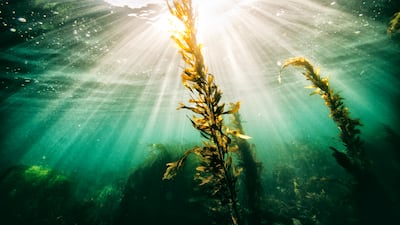About 400 years ago the deserted coastal village of Ravenscar was the bustling centre of Britain’s alum industry and thus owed some of its success to its abundance of seaweed.
For 250 years, thousands of tonnes of kelp were dragged up the sheer cliff edges of England’s east coast to be used in the process of making alum crystals, which for centuries were the core component for the world’s textile industry, making it possible to fix dyes to cloth.
As technology progressed with the creation of synthetic dyes, demand in the alum industry shrank away and kelp became a forgotten sea crop at the turn of the 19th century.
But as governments globally seek ways to mitigate carbon emissions, Yorkshire’s seaweed is once again at the fore of a new farming wonder, in the form of a pioneering offshore seaweed farm 16 kilometres along the coast in Scarborough.
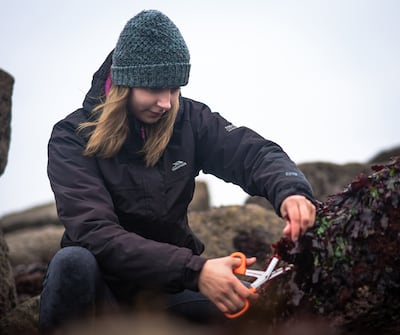
Seaweed ‘consumes more carbon than forests’
Scientists say seaweed can be a useful instrument for achieving the global goal of becoming carbon-zero.
Research by Sylvia Hurlimann, from the Department of Molecular and Cellular Biology at Harvard University, reveals that as they grow, seaweed pods consume more carbon than trees in forests.
“When plants such as trees photosynthesise and grow, carbon in the form of carbon dioxide is removed from the atmosphere and converted into biomass, such as a branch or leaf on a growing tree,” she said.
“Although trees store carbon, this storage is vulnerable since deforestation or forest degradation release this carbon back into the atmosphere, undoing the benefits. When thinking about carbon sequestration, we need to focus on permanent solutions.
“Coastal ecosystems sequester away surprisingly large amounts of carbon. They can sequester up to 20 times more carbon per acre than land forests.
“As we decrease our use of fossil fuels, carbon sinks such as kelp forests will play a key role in getting us to net-zero emissions.”
Climate change research in Antarctica led to UK’s seaweed revival
The inspiration for Scarborough’s aquatic farm wasn’t born of the crop’s once-rich local history, however, but in the heart of frozen Antarctica, more than 14,000 kilometres away.
Former Royal Navy officer Wave Crookes was working as a navigator on the RRS James Clark Ross scientific research vessel for the British Antarctic Survey, with fellow Briton Laura Robinson, a professor of geochemistry.
Together, they found a novel solution to the world’s climate problems and launched the pioneering seaweed farm SeaGrown, thought to be the UK’s first.
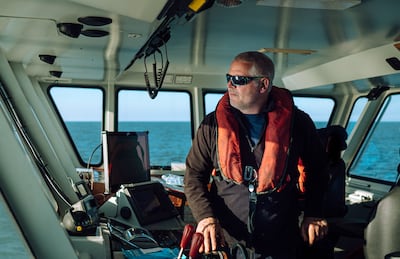
Originally from a fishing family in Scarborough, Mr Crookes knew it would be the perfect place for the venture.
“It was while working in Antarctica on scientific projects that we knew we wanted to start a business that could help the planet back in the UK,” he told The National.
“We did a lot of research into seaweed. The world needs to offset the carbon and seaweed farming is a way of doing that so we decided to give it a crack.”
The offshore farm is producing a sustainable seaweed crop, which can be used in everything from biodegradable plastics and food to a new source of pharmaceuticals, cosmetics and textiles.
“Ocean farming is good for the planet as it draws down carbon dioxide from the atmosphere while oxygenating, de-acidifying and cleaning the ocean,” Mr Crookes said.
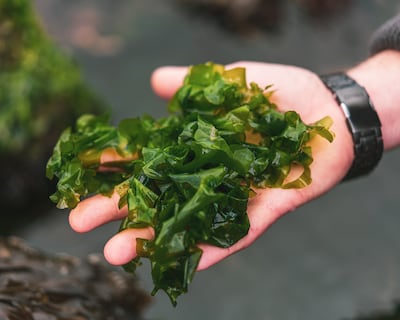
“We use nothing but sunlight and the cold, clean waters of the North Sea to make healthy, sustainable and innovative products which benefit humans, animals and planet Earth.
“Our ambition is to help the ocean to turn the tide on climate change and keep itself healthy.
“We have developed a brand-new method for seaweed farming which can stand up to the challenging open-water environment of the wild North Sea.”
The crop just needs sun and sea to grow — no chemicals, fresh water, power or even land — and can absorb huge amounts of carbon and release oxygen into the water as it grows.
SeaGrown obtained a licence to wild-harvest the seaweed. It hand-harvests the kelp that washes up on the beaches, which is used in their food seasonings, including salt and Sichuan seaweed and smoky piri-piri seaweed flavourings. They also grow their own at their North Sea farm, which enables the company to supply products to industry on a larger scale.
“Sometimes it’s just me and 400 seals down on the beach at first light, harvesting,” Mr Crookes said.
“We then dry it, mill it and blend it with herbs and spices at our processing site and sell it all over the world.
“It’s even in Selfridges, in London.”
The business operates from Scarborough Harbour in its vessel the Southern Star, which was formerly used as a supply ship in the Great Barrier Reef, a survey vessel in the Falkland Islands and had a previous life in antipiracy operations in the Gulf of Aden.
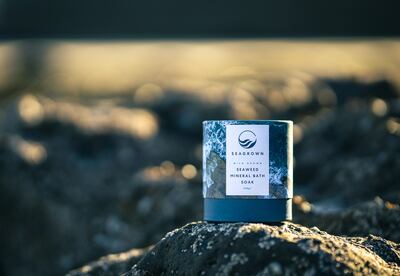
The vessel plays a key role as a seaweed hatchery and a visitor centre showcasing the ecological importance of the initiative.
It enables tourists to enjoy Scarborough’s picturesque harbour on the sun-soaked deck whist just metres below them the hatchery is providing one of the answers to the world’s climate change crisis.
“We create the seeds in tanks at the hatchery,” Mr Crookes said.
“When they are big enough we then transfer them to ropes in our offshore farm.”
It carries out the work on its second vessel the Bright Blue, which previously worked as an oil spill response vessel in Asia and the UK.
Seaweed can help farmers tackle their carbon footprint
Mr Crookes says seaweed can play a big role in the future of the farming industry as the kelp can be used as fertiliser and added to cattle feed.
“We want to support the farming industry,” he said.
“Food security is so important, issues of land and obtaining fertiliser is a pressing issue.
“The seaweed farm is great as it doesn’t need land or power to grow. The crop can play a big role in the farming industry as it can be added to cattle feed and can be used as fertiliser and a soil enhancer as its minerals are good for the soil and plant growth.”
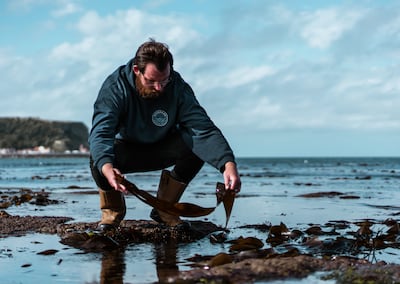
Ocean-based carbon dioxide removal is a vital tool, scientists say
About 70 per cent of the world’s oxygen is produced by marine plants, including seaweeds.
This month, Brad Ack, chief innovation officer of Ocean Visions, a non-profit research organisation, told the World Ocean Summit that the ocean stores 50 times more carbon in bicarbonate and carbonate forms — such as shellfish, seagrass and seaweed — in the bottom of the sea than what is in the atmosphere.
“At the end of the day, carbon dioxide removal is ocean conservation,” he said.
“The potential for employing the power of the ocean to sequester and safely store carbon dioxide is enormous, relative to that of land-based counterparts.
Oceans covers 71 per cent of the Earth.
“It naturally cycles and stores carbon safely at the bottom of the sea; and has far fewer social and political controversies/ramifications than many land-based approaches,” Mr Ack said.
“Ocean-based carbon dioxide removal can take a number of forms, from growing marine ‘trees’ like kelp and other seaweeds, to accelerated weathering of minerals that interact with seawater, to ocean iron fertilisation, and more.
“Carbon dioxide removal is imperative in the race against dangerous climate change and ocean-based carbon dioxide removal is a legitimate and critical tool in the race to avert climate disasters.”
Last year, the British government announced an investment of more than £400,000 ($502,640) in a seaweed academy to teach people how to farm the mineral-rich plant.
Hopes are that training and education in seaweed farming will help to grow an industry that will play an important role in the country’s net-zero ambitions.
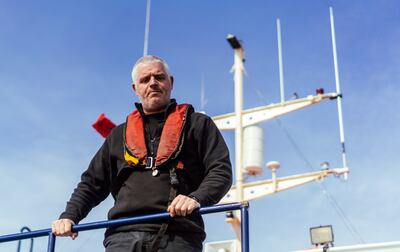
Mr Crookes is setting up an educational centre for schools on his vessel, to teach young people about the importance of seaweed in carbon removal.
He has also set a consultancy to help others create their own aquatic farms and has been inundated with requests from around the world.
“We have been contacted by people all across the world eager to learn how to set up their own,” he said.
“We are helping people in Australia, India, Canada and across Europe and the UK. It is a young industry but it has the potential to play such a vital role in all our futures.
“Right now it is the most important thing we can do with seaweed.”
